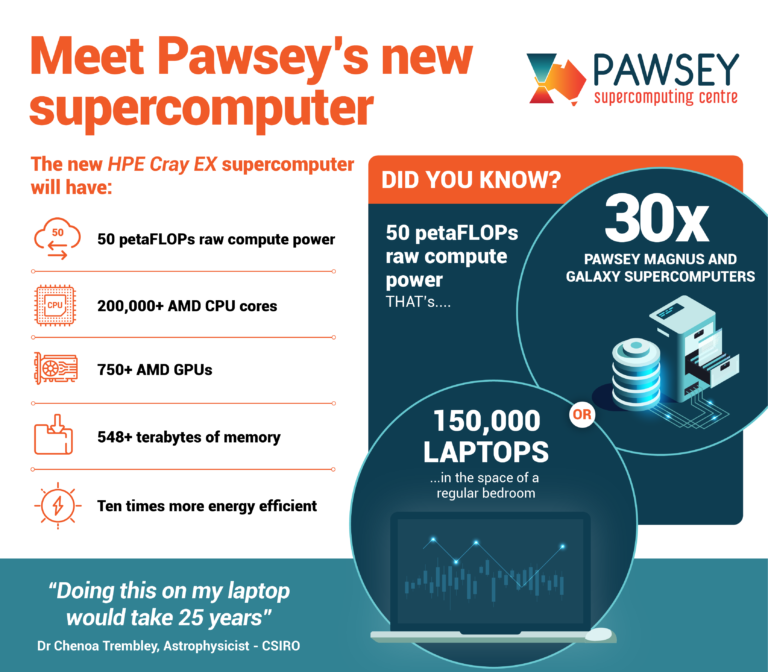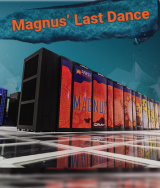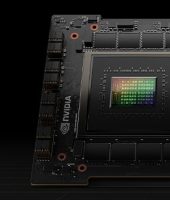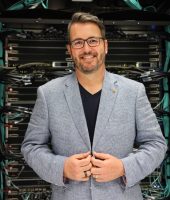Pawsey’s Magnus petascale supercomputer is being retired at the end of this year. As one of Australia’s Tier-1 public access supercomputers, users have clocked over one billion core hours since its inception 6 years ago. Magnus has helped more than 100 projects each year.
This year is the last allocation year for Magnus before its users are switched to the whopping new 50-petabyte Hewlett-Packard Enterprise (HPE) computer.
A snapshot of Magnus’s last dance
Almost sixty-percent of Magnus’s system allocation is through open calls. This means any researcher from any Australian University can apply to use our Magnus through the National Computational Merit Allocation Scheme or the Energy and Resources Scheme.
But before Magnus shuts down for good, here’s a look at some of the incredible projects it is helping researchers tackle this year.
Cleaner combustion
A University of New South Wales team is using Magnus to search for more efficient ways to harvest renewable energy. The team uses Magnus to simulate how atoms collide during combustion. This will help engineers make more powerful next-generation engines that run on new, renewable fuels. The particles that lead to energy in solar cells also use combustion dynamics, so the research will help engineers build better solar panels for green energy.
The team, led by Professor of Mechanical Engineering, Evatt Hawkes, has been using Magnus for renewable energy research since 2016. In 2018, the team received $1.2 million in ARC grants to study particle flow and gas compression ignition engines, leading to less harmful health impacts from these engine types. Their current project, simulating particle collisions in 3D space, will use over 14 million core hours on Magnus this year.
A new gold standard
CSIRO Mineral Resources is partnered with Pawsey to discover the origin of gold deposits beneath Australia’s soil. The project, led by CSIRO geochemist, Dr Yuan Mei, studies how gold molecules are transported through ore fluids. The current theories of how gold deposits are formed predict that hydrothermal fluids – liquids heated by the Earth’s interior – carry gold molecules to form deposits. But these theories have been upended by recent research into gold ore and exotic fluids like carbon dioxide and sulphur dioxide. Yuan’s work with Magnus models the flow of gold through fluids, to understand how these gold deposits are really formed. This work will give Australian geologists a better idea of where to find rich new gold seams. The large-scale calculations of these fluid dynamics have been run over three years, using almost 8 million core hours on Magnus.
Go with the flow
Australia is a land famously girt by sea. From the coast to the deep ocean, nutrients from marine life are carried along by the currents. These nutrients are collected by aquatic vegetation. University of Western Australia’s Oceans Graduate School is simulating how these underwater seagrass meadows and coral reefs collect nutrients. Professor Ryan Lowe heads the research team. He uses Magnus to simulate how vegetation uses ocean flows to capture nutrient particles. The project also features high-resolution simulation of marine ecosystems from Ningaloo, Pilbara and Kimberley ocean regions. The project ranges from small simulations of less than one cubic metre, to challenging large-scale coastal simulations spanning up to 1000 metres. Ryan utilised Magnus since 2016 and will use more than 10 million core hours this year. By simulating these flows, Ryan can inform conservationists on how changing weather conditions and climates will affect our vulnerable marine life.
Direct drug design
The Curtin Health Innovation Research Institute (CHIRI) is working with Pawsey to design better methods of drug delivery. CHIRI’s Biomolecular Modelling Group is using Magnus to create large-scale computer models of molecules found within the body, such as cell membranes and proteins. By understanding the properties of these molecules, the team is helping drug manufacturers find new ways to target specific areas of the body. This work will improve fast and slow-release medicines, cancer treatments and other localised health problems. It will also simulate natural chemical reactions within the body, giving researchers a better understanding of cancer evolution and neurodegenerative disorders like Alzheimer’s and Parkinson’s disease.
The Biomolecular Modelling Group is led by Professor Ricardo Mancera and has been a Pawsey partner for more than 5 years. Through the “Large scale molecular dynamics simulations of macrobiomolecular complexes” project the group will use more than 10 million core hours this year.
Future
Pawsey is dedicated to providing supercomputer access to Australia’s researchers. If you have a project that require large scale supercomputing resources or consultation, please consider applying for next year allocation on the new Setonix supercomputer.
For details on how to apply visit our website. For open calls, we accept grant allocations from the National Computational Merit Allocation Scheme and the Pawsey Energy and Resources Scheme.

Magnus: A Truly Team Effort
Through all the years of operations, Magnus would not be possible without an effort of the current Pawsey team, Pawsey alumni and collaboration with researchers. Magnus has been host to staff, community tours, national and international guests. Though Magnus will be decommissioned this year, its impact and engagement won’t be forgotten.
- This story was written by Thomas Crow


